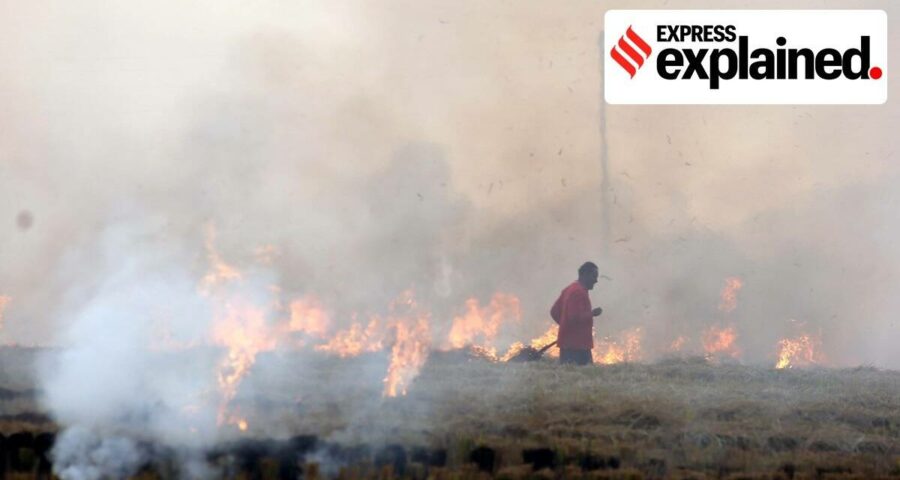The government has been appointing these nodal officers for the past few years now to control the fires. However, despite this, the number of stubble fires has been increasing with every passing year.
WITH PADDY harvesting season beginning in two weeks, the Punjab government has again announced that more than 8,000 nodal officers will keep a strict check on stubble burning in the state. The government has been appointing these nodal officers for the past few years now to control the fires. However, despite this, the number of stubble fires has been increasing with every passing year. Why has this move failed to control stubble fires in the state? What could be the real solution for this menace?
When did the government start appointing nodal officers to check stubble burning?
After coming into power in 2017, the Congress government started appointing more than nodal officers across Punjab from 2018. This is fourth year of these officials being appointed ahead of the harvesting season, from village to district level. In Punjab, there are over 13,000 villages, out of which the paddy is sown in around 10,500. These include 1,000 villages with very less area under paddy and effectively 9,500 which are the main paddy villages for which over 8,000 nodal officers have been appointed because the size of some villages is small and one nodal officer is looking after two villages also.
How many stubble fires were recorded in Punjab from 2018 to 2020 and the year before these nodal officers were deputed?
After the appointment of these officials, Punjab recorded a total of 50,590 fire incidents in 2018, which went up to 55,210 in 2019 and 76,582 in 2020. Within three years, there was a rise of over 26,000 fire incidents. In 2017, 45,384 stubble fires were recorded in the state.
In fact, Punjab had over 76,000 stubble management machines till last year, and over 19,000 custom hiring centres of these machines, but nodal officials could not mobilise farmers to use these in their full capacity.
Why did they fail?
A senior nodal officer said: “We are just like postmen as the government is appointing us just to monitor the fires and verify them physically so that action can be initiated against farmers for registering a case or imposing environmental compensation. Our role is to just report fires and disseminate information about it, nothing else. With this role, how can field fires be stopped?”
What is the solution?
Experts say nodal officer must be appointed at the beginning of paddy transplanting and they should be focusing on changing the mindset of big and upper medium farmers, who can afford stubble management machinery and also own such machines. “They should also maintain a record of those farmers of their village who cannot afford stubble management machinery and then they should suggest to the government look for various ways to manage the stubble of poor farmers’ fields with the help of social organisations, local industries which consume stubble, village panchayat, from discretionary funds of the Punjab chief minister and cooperative societies, which can provide machines at nominal price etc,” said an expert.
“There are examples in the state where big farmers in some villages are providing their machines to small farmers free of cost to manage the stubble and here the government can share the burden of diesel expenses with the help of various potential groups,” said a senior officer in the agriculture department.
“Despite having machines, a large number of big and upper medium farmers burn stubble due to their mindset because setting fields on fire is the most easy task for every farmer from big to small,” said another senior agriculture officer.
“But the government is just doing a formality of appointing these officials ahead of every paddy harvesting season just to set its records right in front of National Green Tribunal (NGT), which takes the government to task on stubble burning,” said an officer.
Apart from this, the government should chalk out a strategy for the 10 most vulnerable districts of Malwa region, which account for over 80 per cent of the stubble fires of the state, because if the government is able to control fires in these districts, Punjab’s fire incidents will go down drastically, said an expert from Punjab Agriculture university (PAU) Ludhiana. “It’s time to do something concrete on the ground, as the past three years with 8,000 nodal officers every year with no result on the ground is enough time to open the eyes of the government,” the expert added.
Source: Read Full Article


